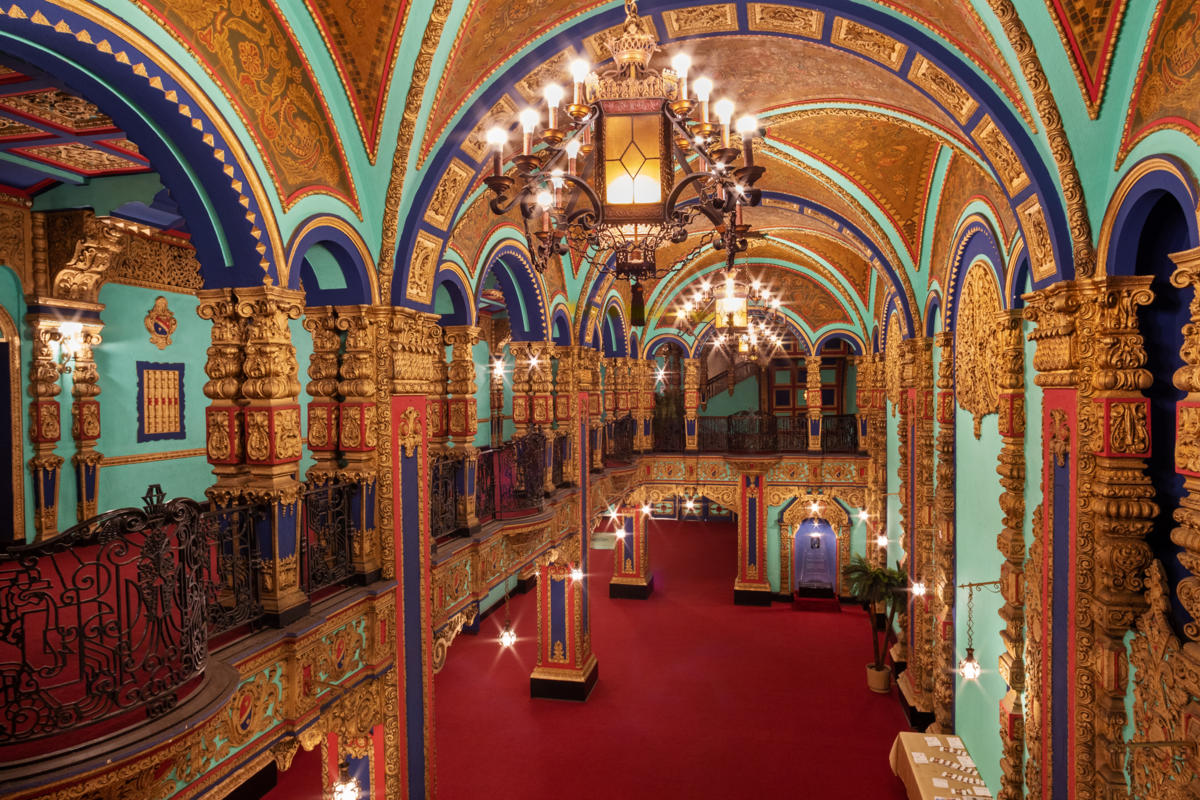Untapped Cities Insiders were recently treated to a special tour inside the Valencia Theater, now home to the Tabernacle of Prayer for all. The Valencia Theater was the first of five “wonder theaters” to open in New York City in the 1920s and has all the opulence of a majestic movie palace. Joining our Insiders on the tour were New York City photographers and Untapped Cities contributors James and Karla Murray who captured beautiful photographs of the stunning space and recounted their experience for 6sqft. Check out some of their photographs below and find out what we learned about this unique landmark on the tour.
If you want to join our next tour of the Valencia, and take part in more behind-the-scenes tours and special events in New York City all year long, find out how you can become an Insider today!
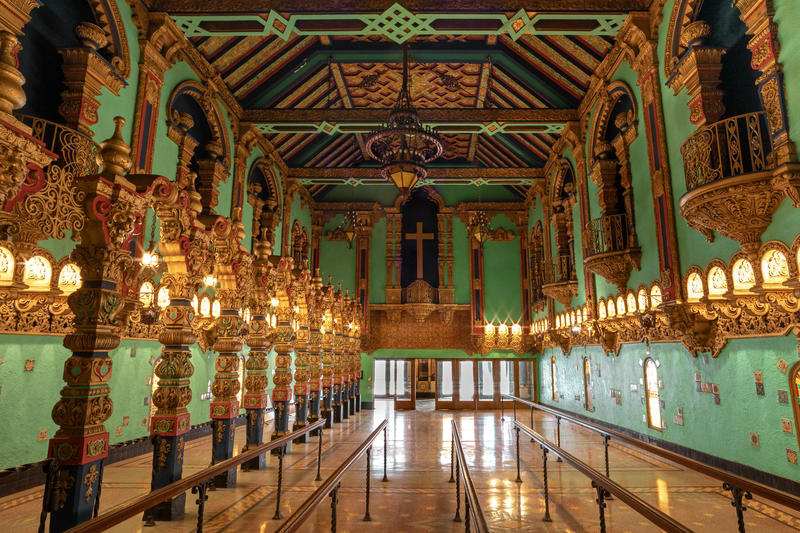 Photograph by James and Karla Murray
Photograph by James and Karla Murray
The Valencia opened in January 1929 and was followed by Brooklyn’s Kings Theater, the Bronx’s Paradise Theater, Manhattan’s United Palace Theater in Washington Heights, and the Loew’s Jersey City. All five theaters still exist and are used for various purposes from churches, to cultural arts and performance centers. The Valencia (and the Paradise) was designed by Austrain architect John Eberson. Eberson’s specialty was atmospheric movie palaces, and he designed over 100 of them all over the United States. An atmospheric theater is meant to make visitors feel like they have been transported to an exotic location. At the Valencia, Eberson creates the illusion that you are sitting in an outdoor courtyard with elaborate facades of balconies, terraces, and turrets in Spanish and Mexican Baroque styles that line the sides of the theater and a blue domed ceiling speckled with over 100 lights that twinkle like stars overhead. Our tour leader, the church’s pastoral secretary Sister Theodora Forbes, turned out the lights and turned on the twinkling stars to give us a taste of what it would have been like in the heyday of the theater.
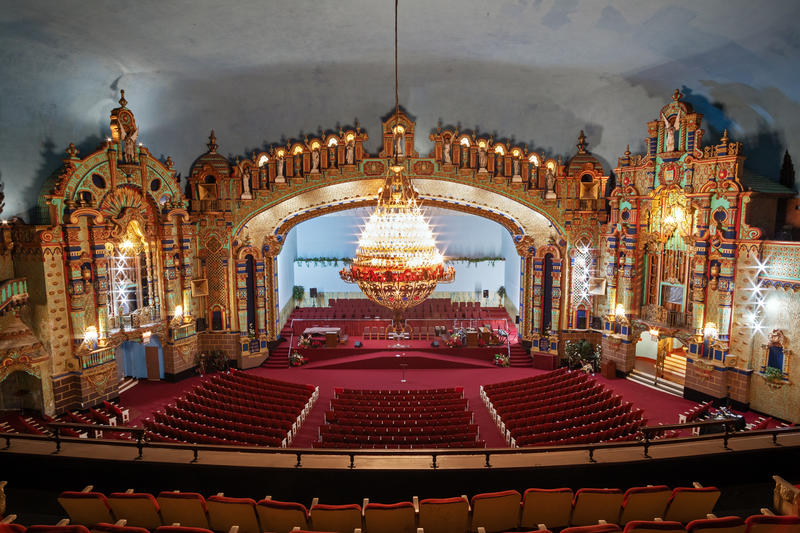 Photograph by James and Karla Murray
Photograph by James and Karla Murray
Sister Forbes’ love of the building was apparent in the affectionate way she recounted the theater’s history and enthusiastically pointed out all of its amazing architectural features, like the lions heads that are incorporated everywhere in the theater’s decor. Apparently, MGM owner Marcus Loew’s last name means lion in German, so he adopted the animal as the symbol of his movie empire. The amount of intricate details incorporated into the theater’s design, from the painted coffered ceilings to the inlayed tile floor in the lobby and everything in between is truly impressive.
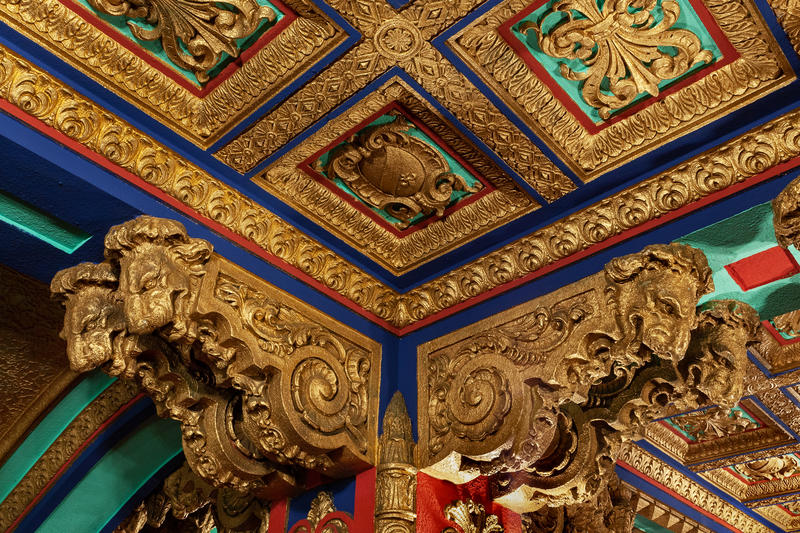 Photograph by James and Karla Murray
Photograph by James and Karla Murray
The Valencia showed a combination of live performances and films until 1935 when the programming switched solely to movies. The theater remained successful until the advent of VCRs in the 1970s when competition from at-home entertainment made it hard for the theater to fill its 3,400 seats. In 1977 the theater closed and entered a period of neglect. The Tabernacle’s founder Apostle Johnnie Washington, who needed a bigger space for his growing congregation, was essentially gifted the theater, but had to pay $1.00 to make the transaction official. The congregation took the church on “as-is” and was responsible for the entire renovation which cost more than $200,000. Members came together to fundraise and volunteer their own time and talents to restoring the building to its former grandeur.
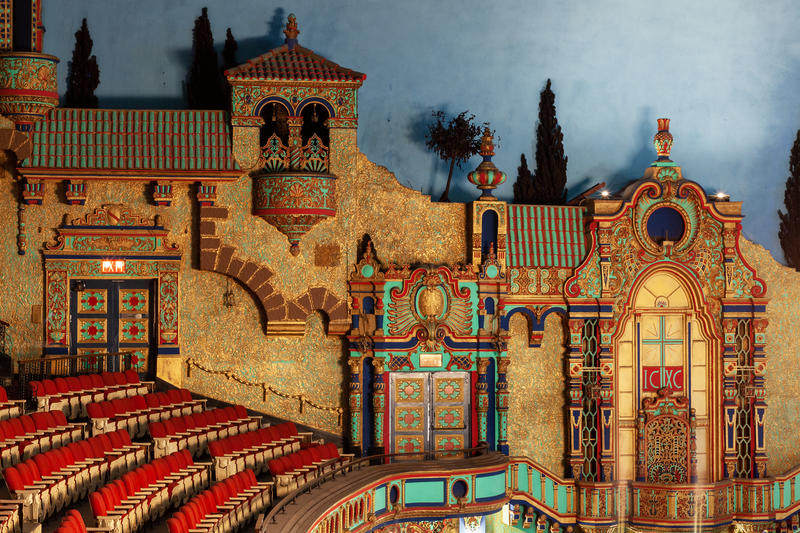 Photograph by James and Karla Murray
Photograph by James and Karla Murray
Everything in the theater is original except the carpets, seat covers (which were cut and sewn by the congregation) and the large chandelier in the center of the theater that was brought in from Greece in the 1970s to bring light into the windowless space. The vibrant colors used to paint the intricate decor are the same as those originally used and every two years the space gets a fresh coat. Unfortunately, one element of the design that is not currently functioning is the cloud machine that once enhanced the realism of the starry blue sky overhead. Besides bringing in the chandelier, the other decorative change the church made was to the row of statues that line the proscenium. These statues were originally naked Roman and Greek goddess but the church added wings and robes to make them angels.
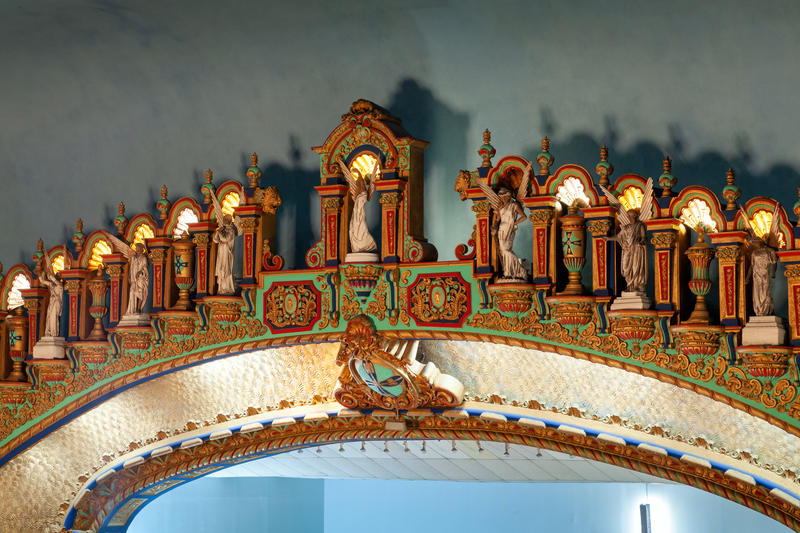 Photograph by James and Karla Murray
Photograph by James and Karla Murray
If you would like to join our next Insiders tour of the Valenica, and gain free access to New York City’s most off-limits places all year long, become an Insider today! You can see all of our upcoming and select past events here.
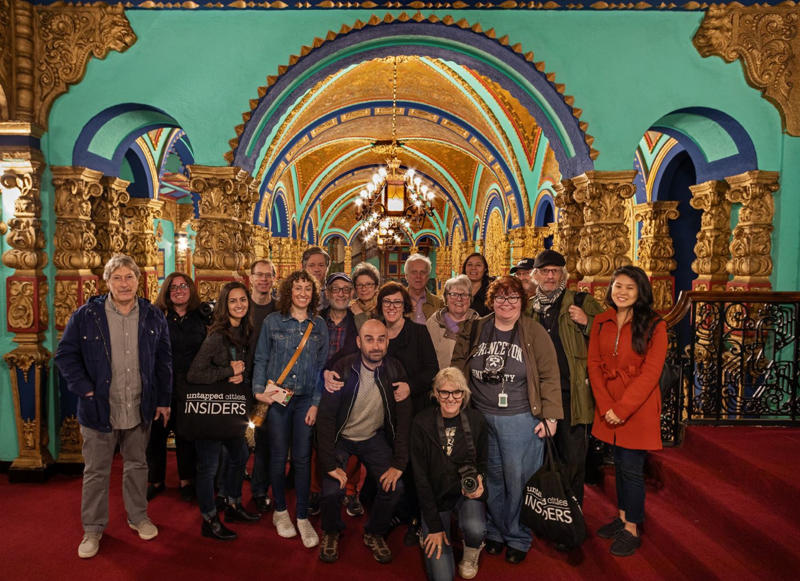 Photograph by James and Karla Murray
Photograph by James and Karla Murray
Next, check out 12 of NYC’s Lost and Demolished Grand Theaters and 17 Historical Theaters in NYC’s Times Square






